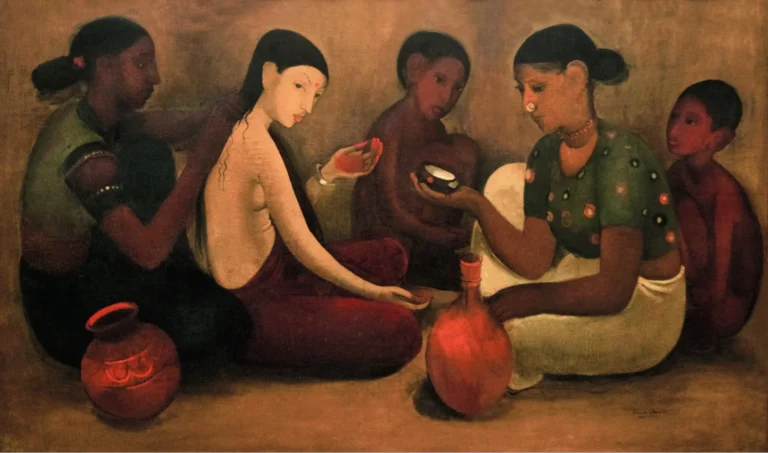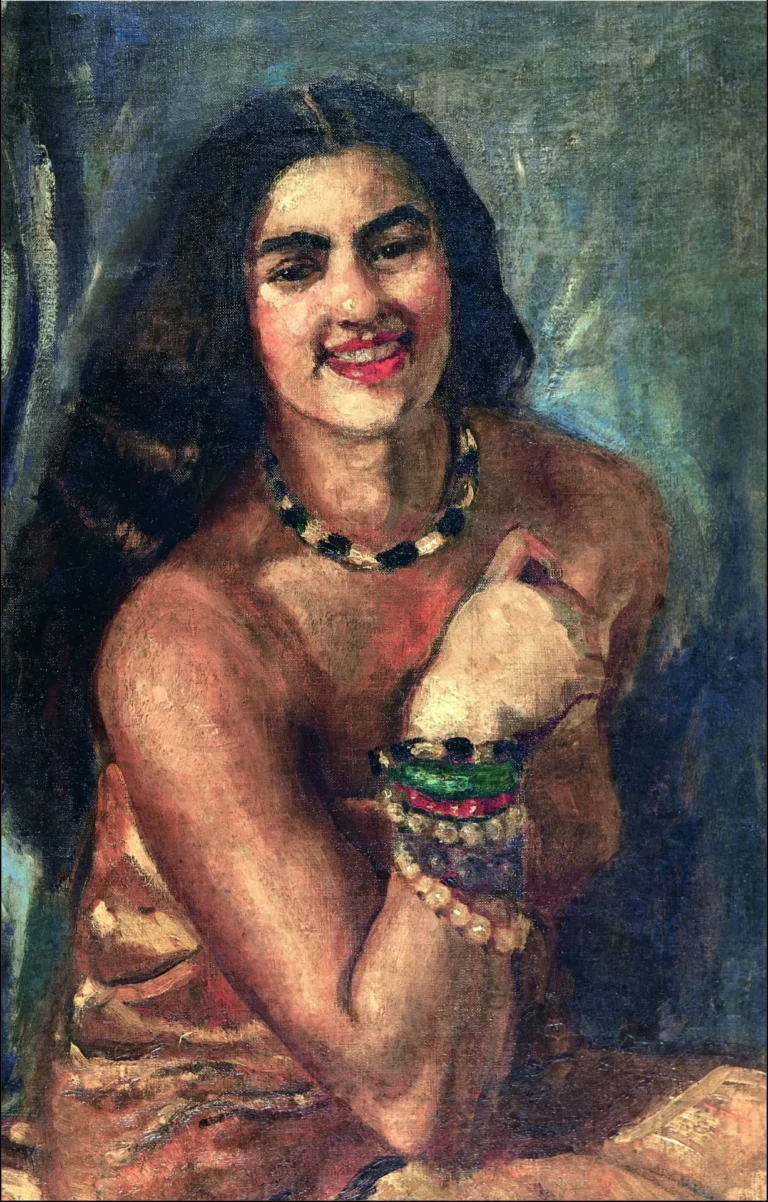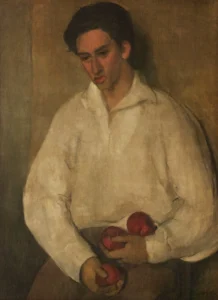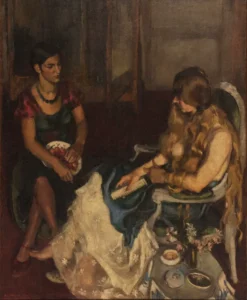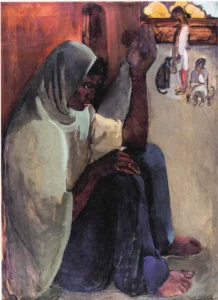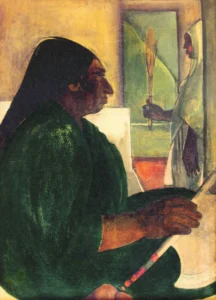Bride's Toilet(1938)
Created in 1937, Bride's Toilet is a poignant portrayal of a bride preparing for her wedding, surrounded by women and children. The painting is part of Amrita Sher-Gil's South Indian trilogy and showcases her unique style, blending Indian themes with European techniques. The minimalistic expressions of the figures and the rich color palette offer deep insights into the melancholy and simplicity of rural Indian life and the rituals surrounding marriage, marking Sher-Gil's influential contribution to Indian art.
Year 1937
About the Artwork
Did You Know
Liked what you see? Add it to your collection.
Enjoyed reading? Share it.
... continued
Artist and Year
Bride's Toilet was painted by the Hungarian-Indian artist Amrita Sher-Gil in 1937.
Style and Influence
The painting is part of Sher-Gil's South Indian trilogy, which also includes 'Brahmacharis' and 'South Indian Villagers Going to Market'. It reflects her fusion of Indian and European art styles, particularly influenced by the frescoes of Ajanta and the miniatures of Mughal art. The painting employs a rich, colorful palette and a 'flat' style reminiscent of Gauguin, combined with the austere shades seen in the Ajanta caves.
Subject Matter
The painting depicts a scene from a bride's preparation ritual, showing a young, light-skinned bride seated in her chamber. She is half-naked, with her palms covered in mehndi, and is surrounded by two other women and two children. One woman is dressing her hair, and the other is holding a container. The faces of the figures are expressionless, and the overall scene conveys a sense of simplicity and melancholy.
Exhibition and Significance
Bride's Toilet was one of 33 works displayed at Sher-Gil's solo exhibition at Faletti's Hotel in Lahore, British India, from 21 to 27 November 1937. This painting is significant for its portrayal of rural Indian life and the cultural significance of marriage in Indian society, showcasing Sher-Gil's empathetic and detailed depiction of her subjects.
Artistic Phase
This work marks a period in Sher-Gil's career where she had returned to India and was deeply influenced by Indian art and culture. She sought to express the life of Indian people through her canvas, focusing on the everyday lives of the poor and underprivileged.





